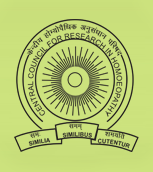Indian Journal of Research in Homoeopathy
Keywords
observational study; diabetic foot ulcers; homeopathic treatment of; Silicea; Sulphur; Lycopodium; Arsenicum album; Phosphorus; ulcer assessment score
Article Type
Original Article
Abstract
Background:The risk for lower extremity amputation (LEA) in patients with diabetic foot ulcer is high, and high recurrence rates of foot ulcers pose a risk that the amputations will be repeated. While the incidence rates of diabetic foot ulcers are often poorly documented, such as is the case in India, the heavy strain of the disease on health care budgets can easily be felt the world over. The high cost of the treatment of foot ulcers causes many patients to neglect needed care, resulting in amputations. The present observational study of diabetic foot ulcer was undertaken for the purpose of deriving a group of useful homeopathic medicines for the treatment of this condition, hopefully revealing a cost effective means of reducing the incidence of foot amputations. Method: A prospective observational study was conducted by the Central Council for Research in Homoeopathy at its Drug Standardization Extension Unit, Hyderabad, from October 2005 to September 2009. One hundred and fifty-six (156) patients with diabetic foot ulcer in the age group of above thirty years from both sexes were screened and eighty-one patients were enrolled as per the pre-set inclusion and exclusion criteria. Out of eighty-one cases enrolled only sixty-three cases completed the follow up. The remainder of the cases were excluded. Homeopathic medicines prescribed to the enrolled patients were limited to a group of fifteen pre-defined trial medicines. The improvement of the cases was assessed basing upon the diabetic foot ulcer assessment score, before and after treatment, on a prescribed format devised by the council (Table 1) and by periodic photographs. Results:The difference in the mean of the ulcer assessment score was found to be statistically significant (P=0.000, <0.05) after the treatment with trial medicines. In only one case, the ulcer assessment score showed no significant improvement from the baseline. Silicea (n=22), Sulphur (n=11), Lycopodium (n=10), Arsenic album (n=8), Phosphorus (n=8) were found to be the most useful among the fifteen pre-identified trial medicines. Conclusion:This was an observational study with positive results; however, it is difficult to attribute the positive results to homeopathic therapy alone as the dressing of the ulcer and ancillary measures of themselves often eventuate in ulcer resolution. Further RCT corroboration is recommended for validation of the results.
Digital Object Identifier
10.53945/2320-7094.1686
Publisher
Wolters Kluwer India Pvt. Ltd.
How to cite this article
Nayak C, Singh V, Singh K, et al. A prospective observational study to ascertain the role of homeopathic therapy in the management of diabetic foot ulcer. Indian J Res Homoeopathy 2012;6(1):22-31. doi: 10.53945/2320-7094.1686


